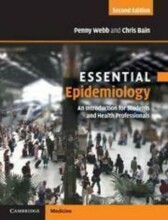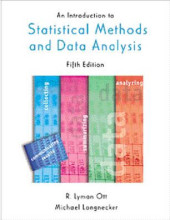Summary: Essential Epidemiology: An Introduction For Students And Health Professionals | 9780521177313 | Penny Webb, et al
- This + 400k other summaries
- A unique study and practice tool
- Never study anything twice again
- Get the grades you hope for
- 100% sure, 100% understanding
Read the summary and the most important questions on Essential epidemiology: an introduction for students and health professionals | 9780521177313 | Penny Webb, Chris Bain.
-
1 Epidemiology is...
This is a preview. There are 28 more flashcards available for chapter 1
Show more cards here -
1.1 Study designs
This is a preview. There are 15 more flashcards available for chapter 1.1
Show more cards here -
Cross- sectional study
All variables (exposure and outcome) are measured at the same moment in time. You take a snapshot of the situation
'' is this related to that? and/or to that?''
Prevalence
Disadvantage; you don't know the cause for sure (reverse causation, confounding)
-> Ask 1000 people about their current mobile phone use, and whether they suffer from headaches. Check whether the two are linked. -
2 How long is a piece of string? Measuring disease frequency
This is a preview. There are 13 more flashcards available for chapter 2
Show more cards here -
What is meant with ecological fallacy?
An error made when information about groups of people is used to make inferences about individuals. -
What is meanth with 'crude rates'?
These are basic rates which describe the overall incidence or death rate in a population without taking any other features of the population into account (in contrast to standardised rates). -
2.1 What are we measuring
This is a preview. There are 17 more flashcards available for chapter 2.1
Show more cards here -
procedure for making frequency measures comparable - mostly for age and for sex
standardisation
-
How can you approximately calculate the prevalence of a disease?
Incidence proportion times the average duration of a disease -
If a new treatment were developed for a disease, what effect would this have on the prevalence and incidence of the disease?
The prevalence of the disease will decrease when the new treatment means that people were cured more quickly and so were ill for less time. But the prevalence of the disease could also increase when the disease had previously been fatal and the treatment means that people live longer with the disease. The incidence of the disease will stay similar in any of these cases, unless it is a infectuous disease. -
What is a cross-sectional study?
A survey of a random sample (or cross-section) of the population where information about potential exposures and outcomes is collected at the same time. This kind of study considers all prevalent cases in the population at the time of the survey. -
What is a study with the following definition called?: A study where a sample of people (the cohort) are followed up over time to see who develops the disease of interest.
A cohort study -
The actual number of deaths observed in a population is compared with the number of deaths that would have been expected if the death rates in the indigenous population had been the same as those for the non- indigenous population
indirect standardisation
-
The standardised mortality ratio used when indirect standardisation
the observed number of deaths / the expected number
- Higher grades + faster learning
- Never study anything twice
- 100% sure, 100% understanding

































